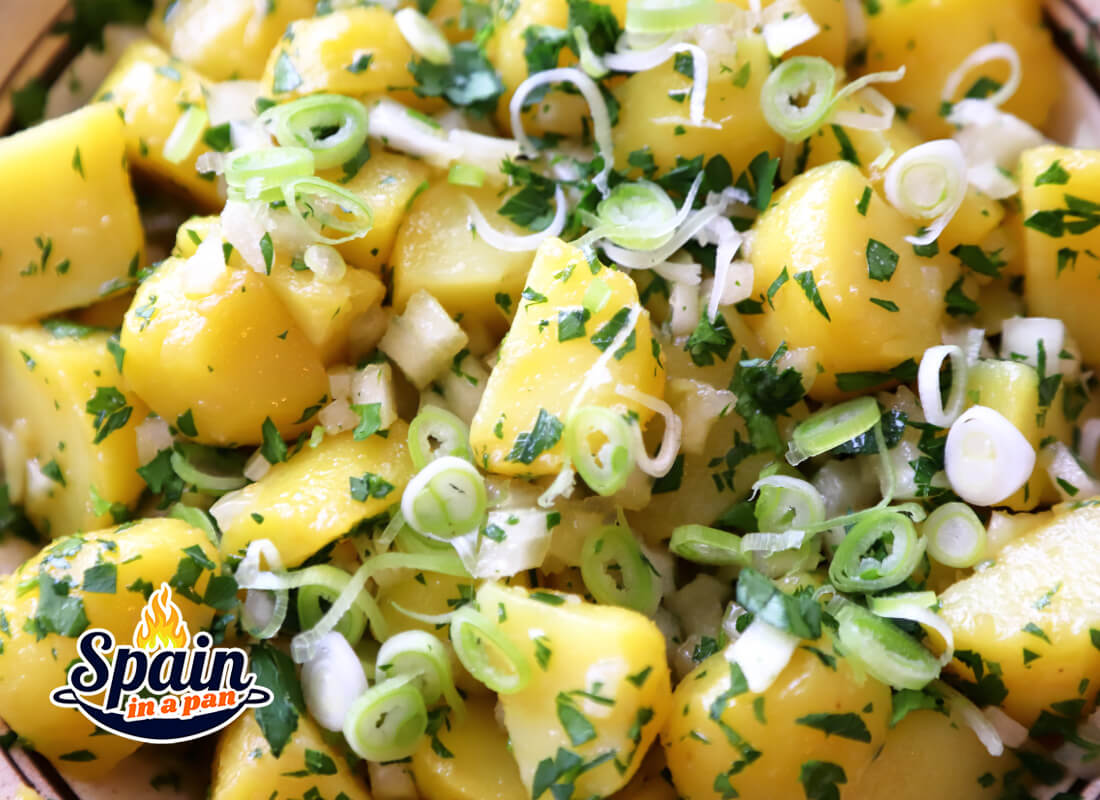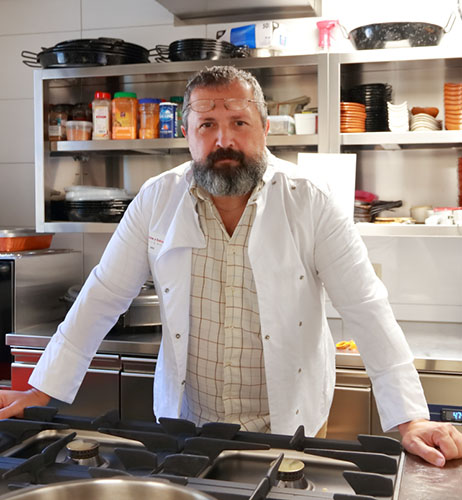The Richest Spanish Potato Salad Recipe
(Ensaladilla Rusa)
By Edu Valor / Author - Spanish Chef
This Spanish potato salad recipe is the king of summer in Spain. Few are as popular as ensaladilla Rusa (Russian salad)!
It's simply delicious cold, straight from the refrigerator. That's how we like it! With a perfect blend of tuna-mayo flavor and a touch of acidity.
You might be wondering why it's called Russian (or Olivier salad). Is it Spanish? Given its extreme popularity in the country, I'd love to say yes, but it's not an original Spanish recipe!
Magazines and papers often mention it as a creation from the Slavic countries.
Let me clear up the confusion!
Lucien Olivier (1838-1883), a Belgian chef of French descent, created a delicious salad in Moscow. Its high demand made him famous in the Russian capital and beyond.
He opened a fine dining restaurant called "Hermitage." Originally, the salad was called "game mayonnaise," later becoming known as salad Olivier.
Lucien Olivier never revealed the full recipe, but customers noted it had crab, partridge, veal tongue, lettuce, pickles, truffles, boiled potatoes, and olives.
But Chef Olivier merely popularized his version of potato salads that already existed in Western Europe.
Europe has a long tradition of salad making. Why do I mention this?
When Lucien Olivier was just seven years old (in 1845), long before setting foot in Moscow, the recipe book "The Modern Cook" by Charles Francatelli was released. This book included a recipe called "Russian salad."
Francatelli wasn't just any chef—he was Queen Victoria's head chef. His version had red mayo, lobster, shrimp, crab, tuna, olives, and capers. Now that's what I call a fancy salad!
Interestingly, it wasn't meant to be a main salad. Rather, it was a mix to accompany his Italian vegetable salad recipe, which included asparagus, peas, beans, and artichokes.
Francatelli, in turn, adapted a recipe from his mentor in France, the great Antonin Carême. His work "Le Pâtissier Royal Parisien" from 1815 included the "salad à la Parisienne."
This version had potatoes, peas, carrots, asparagus, mushrooms, turnips, beets, and beans mixed with mayonnaise. A little different, but not unfamiliar.
Many creations and adaptations went through the hands of different chefs in Western Europe. Spain had its own.
So why is it called "ensaladilla Rusa"? It's not entirely clear, but in the well-known book "La Cuisine Classique" by Urbain Dubois from 1856, there's a recipe for "Salade Russe."
It's not like it had ingredients that were typically Russian. In those times, recipe names were often random.
Spanish chefs were likely inspired by this work, as the salad was part of a banquet menu in Valladolid in 1858. The snippet below the recipe shows part of that listing (courtesy of the National Library).
 Some of the ingredients for my potato salad recipe.
Some of the ingredients for my potato salad recipe.Let's Make a Spanish Potato Salad Recipe
Ingredients for 4+ Servings
Preparation: 45-50 minutes
Cooking: potatoes 15-20 minutes (depends on size), eggs 12 minutes
*Measurements in metric and USA Imperial system. For British/Canadian measurements please use the metric conversion calculator.
Add the mayonnaise when the potatoes and eggs are still warm. It'll emulsify the flavors better and increases the creaminess.
- 700g/25 oz new potatoes (preferrably waxy), regular sized
- 4 eggs hard boiled
- 2 small roasted bell peppers (piquillo peppers), canned/jarred, cut short strips
- 150-200g/5-7 oz tuna natural, canned/jarred
- 4-5 tbsp mayonnaise
- 120g/4 oz green peas, canned/jarred
- 120g/4 oz baby carrots, canned/jarred
- 10 green olives, cut in rings
- lemon juice to taste, I used 1/2 lemon.
- sea salt and pepper
Optional: minced chives or parsley for garnish
Instructions
- Set water to boil in a pot.
- Cut the piquillo peppers in short strips, the carrots short and the olives in rings. Set aside!
- Cut potatoes with skin in quarters, add them in the boiling water with the eggs. Remove eggs after 12 minutes. After 15 minutes pierce a potato with a paring knife and lift. If it slides off easily, they're done! If not, leave another few minutes.
- Take off skin of potato pieces and dice them. Dice the eggs too. Put everything in a bowl.
- Add the tuna, peas, carrots, piquillo peppers and olives. Season with salt and pepper.
- Add the mayo and gently stir a few times without mashing the ingredients. Sprinkle some lemon juice. Stir again and taste!
- Adjust the taste to your liking with extra mayo, salt or lemon juice. Carefully combine everything well.
- Store in refrigerator until it's very cold (3° to 4°C/37° to 39°F).
TIPS:
- Cut the potatoes, eggs, carrots a little larger than a dice.
- Keep the potato salad in the refrigerator. I store it 30 to 35 minutes in the freezer before moving it to the refrigerator. The temperature should be 3° to 4°C/37° to 39°F
- Keep carrots, peas, mayo, roasted peppers and olives in the refrigerator overnight. It speeds up the cooling of the salad.
- Trick of the chef: mix in the mayo when the potatoes and eggs are still warm.
What You Will Need
- A bowl
- Paring knife
- Cutting board
- A pot
- Can opener
- Large spoon/spatula
- Scale
 The "ensalada rusa" or Russian salad, snippet of a railway-inauguration menu in Valladolid 1864.
The "ensalada rusa" or Russian salad, snippet of a railway-inauguration menu in Valladolid 1864.
The ever-popular Spanish potato salad recipe was already enjoyed in Spain, even before Olivier opened the Hermitage in Moscou.
However, Spain's versions had to endure a change of ingredients as a result of the civil war.
From then on we see a more recognizable and affordable recipe. Similar to the ensaladilla we know today.
Potatoes, carrots, peas, boiled eggs, and tuna were and are the main ingredients. Unlike the Sevillian, classic potato salad. An even more reduced version!










